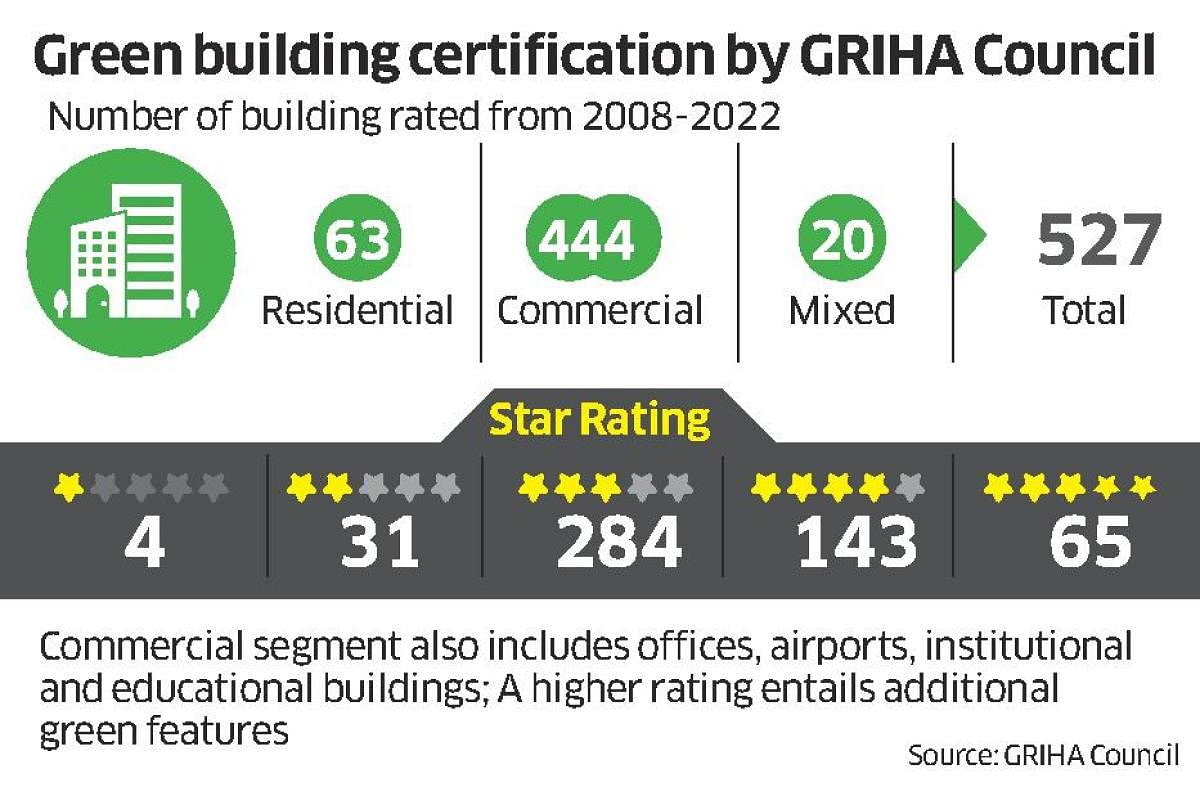

If the Indian real estate ecosystem is serious about turning sustainable, its residential arm has to intensify efforts, and do it soon, say industry observers. The commercial segment, which rose to the occasion more than a decade ago, has made significant strides since, while the housing sector continues to remain a laggard.
The GRIHA (Green Rating for Integrated Habitat Assessment) Council which assesses environmental performance of a building certified a total of 444 commercial buildings as opposed to a mere 63 residential buildings between 2008 and 2022.
According to Prashant Thakur, who heads research at Anarock Property Consultants “About 80 per cent of the value of real estate under construction is on the residential side, the rest is commercial and retail.” This presents a compelling case for the residential segment to step up its commitment to sustainability.
Realty experts attributed this lopsided development to factors ranging from consolidated ownership to higher purchasing power, greater exposure to international norms and ESG (environment, social and governance) requirements in the commercial sector.
“Almost 95 per cent of commercial buildings being constructed today are vying to get certified green,” Thakur highlighted, adding that, “As such, 45 per cent of the tenants are multinational companies who demand that the building they are going to occupy meet certain standards, with sustainability high on the priority list”.
Furthermore, this demand is backed by the ability to pay a premium. A green commercial building entails an additional cost of 15-25 per cent depending on the rating, according to Thirumal Govindraj, senior managing director at RMZ Corp. Today the commercial sector has moved up from bronze or silver rating to gold or platinum rating in terms of the green status of the buildings.
A recent report by property consultancy Knight Frank India pointed out that India recorded a total of 2,436 LEED (Leadership in Energy and Environmental Design) certified buildings till October 2022, a majority of which fall in the commercial and retail segments.
On the residential end, lack of knowledge and understanding, coupled with price-sensitivity account for lower demand. “The message has not gone down to the masses,” Naresh V Narasimhan, who is a managing partner at Venkataramanan Associates reasoned.
Eco-friendly amenities or green certification is not a make or break proposition, yet, for property buyers in the residential segment, according to Anubhav Gupta, chief ESG, sustainability and CSR officer at Godrej Properties.
A residential green building costs anywhere between 2 per cent and 8 per cent more than a regular construction, he added. Lacking economies of scale, environment-friendly building materials are marginally expensive and expertise in labour to work with them remains a challenge.
What has eluded the common man, so far, is that one can more than recover the initial higher investment via benefits in operational costs, tied with sustainable design and construction. “On an average you could end up saving 20-30 per cent of whatever bills you would be paying for your property,” explained Dr Sunita Purushottam, head of sustainability at Mahindra Lifespace Developers.
But all is not lost. “The market is the best enforcer. Low maintenance buildings fetch rents at least 20 per cent higher,” pointed Narasimhan. This acts as an incentive for property owners to invest in sustainable amenities.
Need for govt intervention
Thakur estimated, “We are still a decade away from that where we see the level of sustainable or green building adaptability at par with commercial.” Stakeholders in the industry unanimously agreed on the pressing need for government intervention in the form of stronger regulations to accelerate adoption of sustainable construction.
Narasimhan insisted on the introduction of a sustainability code within the existing National Building Code of India 2016. “You can easily set empirical percentages based on area,” he said.
Others recommended customer advocacy for higher awareness, incentives for faster adoption, dynamism in policy making and calling experts back to the table. They also pushed for fuelling behavioural change, moving forward.